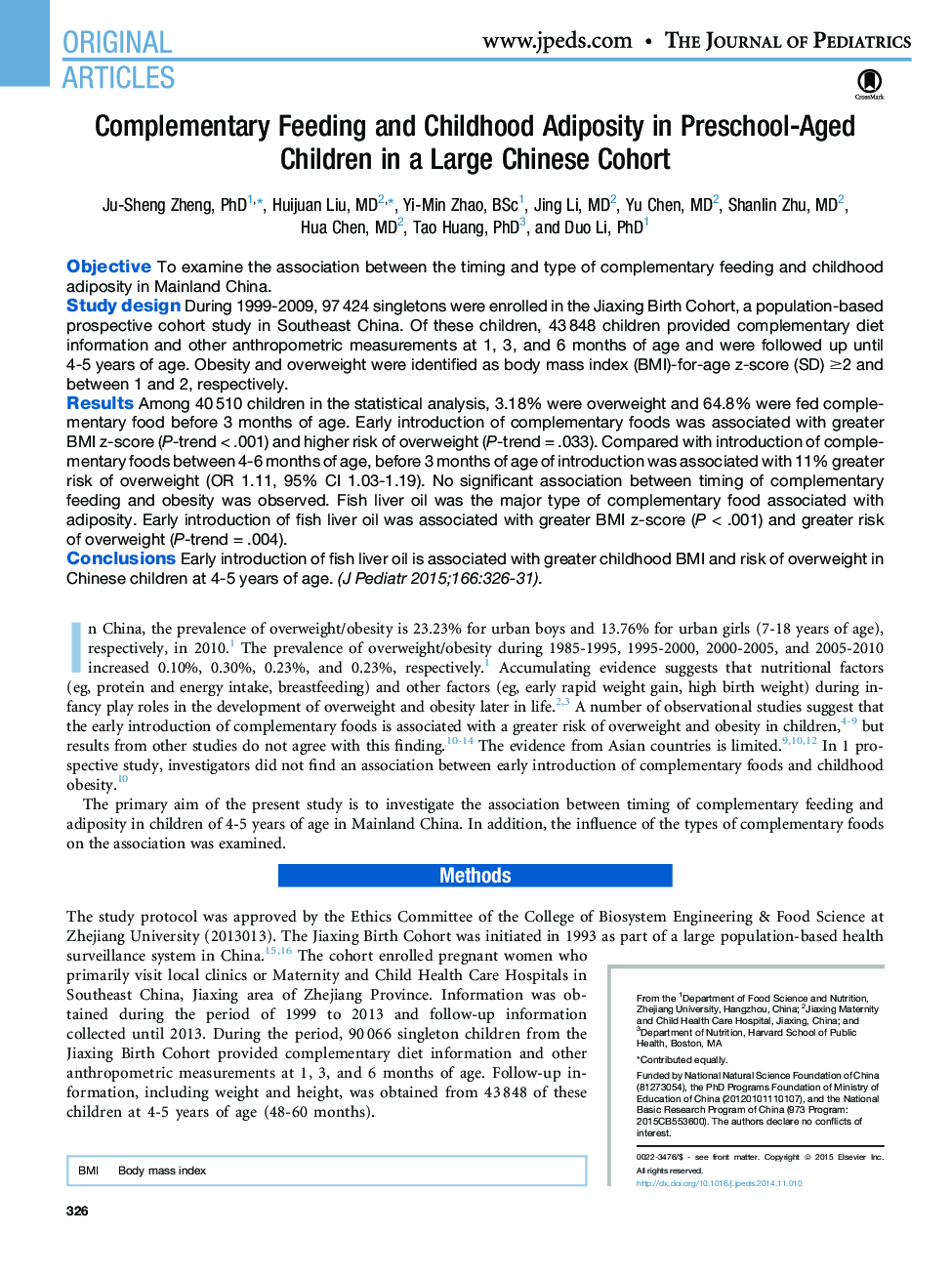| Article ID | Journal | Published Year | Pages | File Type |
|---|---|---|---|---|
| 6221703 | The Journal of Pediatrics | 2015 | 8 Pages |
ObjectiveTo examine the association between the timing and type of complementary feeding and childhood adiposity in Mainland China.Study designDuring 1999-2009, 97â424 singletons were enrolled in the Jiaxing Birth Cohort, a population-based prospective cohort study in Southeast China. Of these children, 43â848 children provided complementary diet information and other anthropometric measurements at 1, 3, and 6 months of age and were followed up until 4-5 years of age. Obesity and overweight were identified as body mass index (BMI)-for-age z-score (SD) â¥2 and between 1 and 2, respectively.ResultsAmong 40â510 children in the statistical analysis, 3.18% were overweight and 64.8% were fed complementary food before 3 months of age. Early introduction of complementary foods was associated with greater BMI z-score (P-trend < .001) and higher risk of overweight (P-trend = .033). Compared with introduction of complementary foods between 4-6 months of age, before 3 months of age of introduction was associated with 11% greater risk of overweight (OR 1.11, 95% CI 1.03-1.19). No significant association between timing of complementary feeding and obesity was observed. Fish liver oil was the major type of complementary food associated with adiposity. Early introduction of fish liver oil was associated with greater BMI z-score (P < .001) and greater risk of overweight (P-trend = .004).ConclusionsEarly introduction of fish liver oil is associated with greater childhood BMI and risk of overweight in Chinese children at 4-5 years of age.
